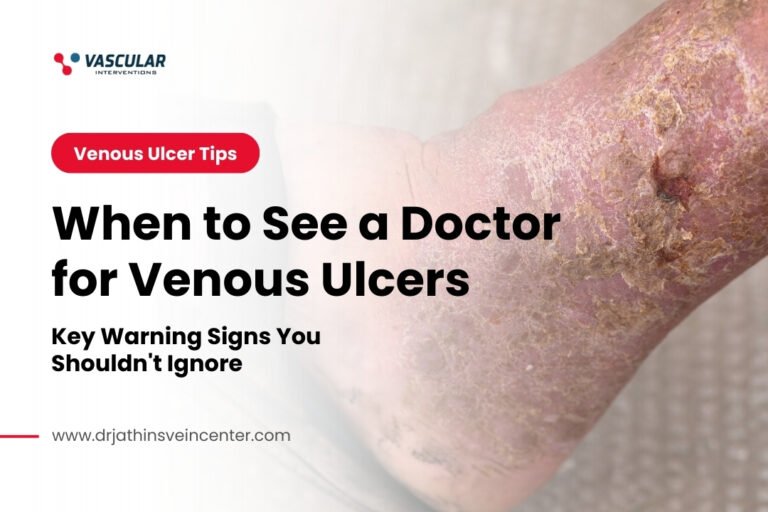Peripheral Arterial Disease (PAD) is a debilitating and potentially life-threatening condition affecting millions worldwide. If left untreated, PAD can lead to complications such as limb amputation, stroke, and heart attack. Fortunately, early detection and treatment can significantly reduce the risk of severe health problems associated with this disease. This blog post will examine the importance of early diagnosis and treatment of PAD, including the symptoms, risk factors, and available treatment options.
PAD occurs when plaque builds up in the arteries that supply blood to the extremities, such as the legs and feet, causing them to narrow and harden. This can lead to poor circulation, pain, and swelling in the affected area. While the condition can develop in anyone, factors such as age, smoking, high blood pressure, and diabetes increase the risk.
Early detection of PAD is critical to prevent complications, preserve limb function and improve the quality of life. A simple yet effective diagnostic test such as an ankle-brachial index can quickly identify potential problems and aid in making accurate diagnoses.
1. Identifying the signs and symptoms of PAD
Peripheral Arterial Disease (PAD) is a condition that affects millions of people around the world, yet it is often overlooked or misdiagnosed. Early detection is crucial to successfully treating PAD, but it relies heavily on identifying signs and symptoms. The most common signs and symptoms of PAD include discomfort, cramping, or pain in the legs during exercise, which typically goes away with rest.
However, as PAD progresses, the pain may occur during rest and become severe, limiting physical activity. Other symptoms may include:
- Numbness or weakness in the legs.
- Slow-healing wounds on the feet or toes.
- Changes in the color or temperature of the feet or legs.
Identifying these signs and symptoms of PAD on time can lead to early intervention and effective treatment, helping to prevent serious complications such as non-healing ulcers or even amputation of the affected limb.
2. Understanding how early detection can reduce the risk of severe health complications
Early detection and treatment of peripheral arterial disease (PAD) are crucial for reducing the risk of severe health complications. PAD is a condition that occurs when plaque buildup narrows or blocks the arteries in the legs, causing reduced blood flow and potential tissue damage. If left undetected and untreated, PAD can lead to severe consequences, such as critical limb ischemia, gangrene, and amputation.
However, with early detection and proper treatment, the progression of the disease can be slowed, and the risk of complications is significantly reduced. Therefore, it is essential to understand the importance of early detection and take proactive steps to prevent the development of this disease. Regular check-ups, early diagnosis, and proper management are essential to comprehensive patient care. They can significantly impact the quality of life and overall health outcomes for individuals with PAD.
3. Assessing the risk factors associated with PAD
Assessing the risk factors associated with peripheral arterial disease (PAD) is a crucial first step in preventing and treating this condition. While some risk factors, such as age and family history, are out of an individual’s control, others are adjustable. These include smoking, high blood pressure, high cholesterol, physical inactivity, and poor diet.
Healthcare providers should thoroughly evaluate patients for these risk factors and implement strategies to reduce them, such as smoking cessation counseling, blood pressure and cholesterol management, encouraging exercise, and promoting healthy eating habits. Identifying and addressing these risk factors early can significantly reduce an individual’s likelihood of developing PAD and its associated complications.
4. Exploring potential treatments for PAD
Peripheral Arterial Disease (PAD) is a common circulatory condition when clogged arteries reduce blood flow to the limbs. If left untreated, PAD can lead to severe complications such as gangrene, amputation, and even death. For this reason, early detection and treatment of Peripheral Arterial Disease (PAD) treatment is crucial. One area of research that has shown potential in managing PAD is exploring different treatment options.
Current treatments for PAD aim to manage symptoms and reduce the risk of complications by improving blood flow to the limbs. These treatments include lifestyle changes, medication, and in severe cases, surgery. Identifying new and effective treatments is essential to improve the quality of life for those living with PAD. Researchers are exploring new medications and therapies, such as stem cell therapy, that have shown promising results in treating PAD. Continued research in this area is critical to advance the management of PAD and improve patient outcomes.
5. Examining the importance of lifestyle modification to reduce the risk of developing PAD
Peripheral arterial disease (PAD) is a significant health issue often undiagnosed until it becomes a critical problem. This disease is characterized by the narrowing and hardening of the arteries that supply blood to the legs and feet, resulting in decreased blood flow to these areas.
While various medical treatments are available for PAD, lifestyle modification remains an essential component of both the prevention and management of this disease. Engaging in regular physical activity, quitting smoking, maintaining a healthy weight, and adopting a heart-healthy diet can all help reduce the risk of developing PAD or decrease the severity of symptoms in those already diagnosed with the disease. By educating patients about the importance of making these lifestyle changes, healthcare providers can help improve their quality of life and reduce the risk of complications associated with PAD.
Conclusion
It is crucial to detect and treat Peripheral Arterial Disease (PAD) early to prevent further complications and improve health outcomes. People with risk factors such as diabetes, high blood pressure, high cholesterol, and smoking should be regularly screened for PAD.
Treatment options such as lifestyle changes, medication, and minimally invasive procedures can effectively manage PAD and prevent severe consequences such as amputation and stroke. Early detection and prompt treatment can significantly improve the quality of life for individuals with PAD and prevent the disease from progressing.





